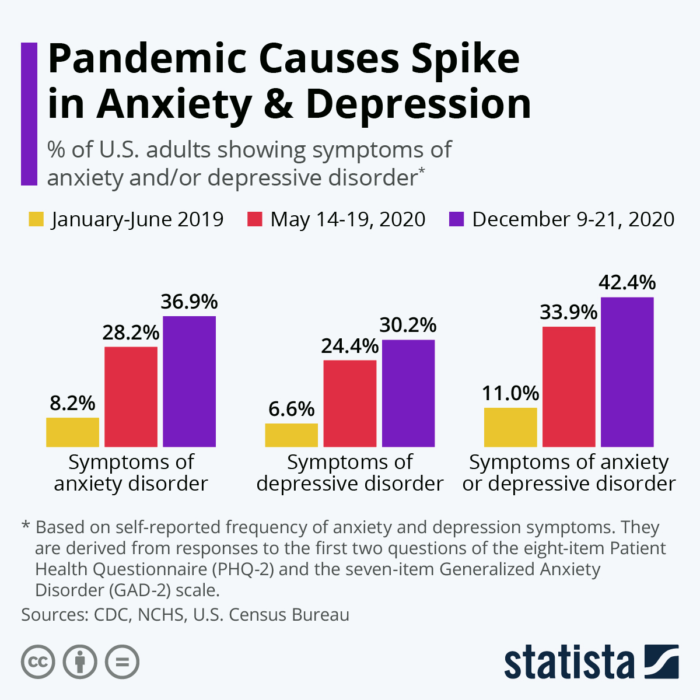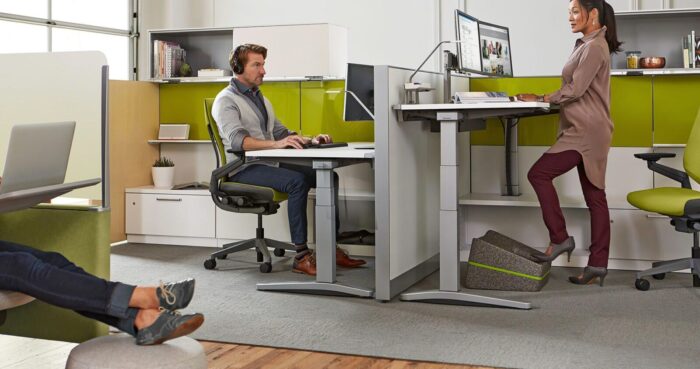
As restrictions lift and the world begins to return to its former pre-pandemic working system, it’s clear to see that a large percentage of the corporate population are all but dreading the reluctant return. Whether it’s the lasting effects of Covid-19’s bitter reign or the early commute just around the corner, studies have shown that Brits just don’t want to go back.
The question is, why are workers so reluctant to return? After swapping the office environment for a bedroom desk in early 2024, life as corporate workers knew it has changed dramatically. From remote communication to isolating restrictions, the impact that the pandemic has had on the mental health and wellbeing of young workers could make returning to pre-pandemic normality harder than employers think.
In fact, a recent study by LCP found that 3 in 5 Brits were currently worried about their mental health on their return to the office.
As more businesses brace themselves for a post-pandemic working future, it’s time for employers to step up if they want to see a successful workforce on return to the office. In fact, the success of the company may just depend on it. Studies predict that there is a direct link between workforce support and business success. Whether it’s mental or physical wellbeing, the more supported employees feel, the better they will perform.
Therefore, as we step back into a post-Covid corporate world, prioritising staff mental and physical wellbeing is the key to a smooth transition back into the office. Below we have listed some of the most important wellbeing strategies that business leaders can implement on return to the office for a future of happy workers and ultimate company success.
HR Training

One of the most effective forms of employee support is to introduce a strong HR presence to the team. Not only are HR considered the driving force behind a large portion of company success, but are also vital components in a business’ wellbeing scheme. There to provide support and understanding for vulnerable employees, a powerful HR system can leave employees feeling reassured on their return to the office, reducing post-pandemic anxiety and boosting team morale.
The key to post-pandemic HR training is communication. For a workforce to remain successful in the wake of Covid-19, HR professionals need to improve their communication skills and alter their wellbeing schemes if they want to see success.
In a time like no other, providing strong lines of communication between the employee and the employer is essential, especially when it comes to mental health. Using HR to provide that line of communication and break the stigma surrounding post-Covid mental health issues will improve mental wellbeing and enhance team communication as a whole.
Post-Covid Wellbeing Workshops

Another key to creating a strong HR support scheme is to introduce wellbeing workshops into the post-Covid HR plans.
Whether they focus on working in a post-pandemic environment or team-building exercises that can boost staff morale, workshops are a great way to improve team-building skills and break stigmas around mental health and workplace stress, improving inclusivity and communication amongst a reluctant workforce.
Not only do workshops encourage team members to bond with each other, but they also encourage those who suffer from common conditions such as anxiety and depression to step forward and seek support from their HR team and most importantly their employer. Remaining open on the topic of mental health and implementing these conversations into your wellbeing scheme has never been more important.
Ergonomic Wellbeing

Physical wellbeing is also not a factor to be forgotten on return to the office. Swapping the couch for the office scene may seem like an easy transition, but ergonomic care must also be thought about during the return to work post-pandemic.
A recent study suggested that a whopping 86% of office workers are sitting for too long during the working day and the pandemic has only increased this number. Implementing healthy schemes to get employees up and moving during lunch hours and during periods of the working day seriously reduces the risk of cardiovascular disease and improves employee energy which can be refocused into their working schedule.
For those employees who do spend their working hours looking at a screen, company leaders need to also be aware of eye strain during long periods of blue light exposure. According to Eyeglasses, encouraging staff to take regular screen breaks and investing in blue light protective eyewear is the first step towards a safer and healthier working environment post-pandemic.
















